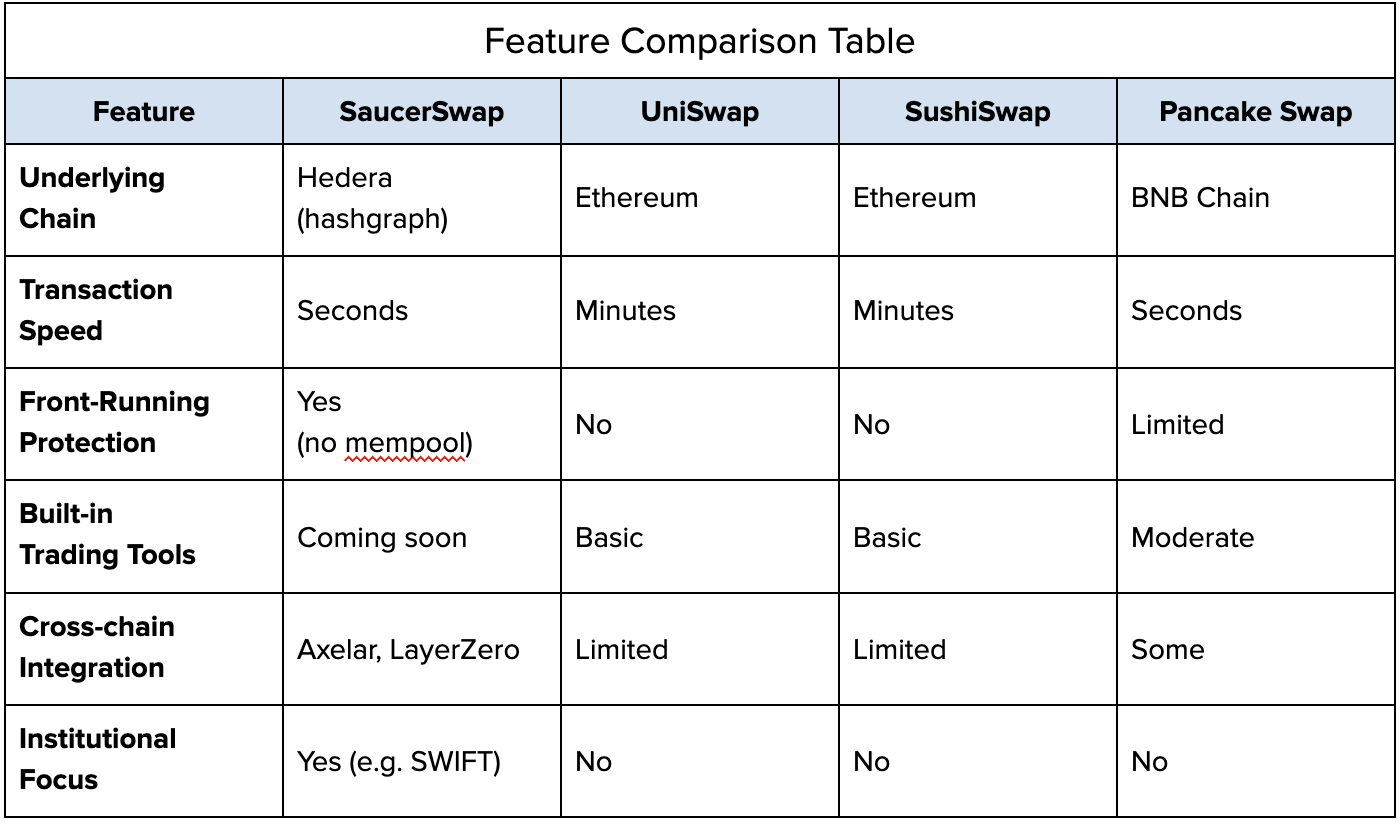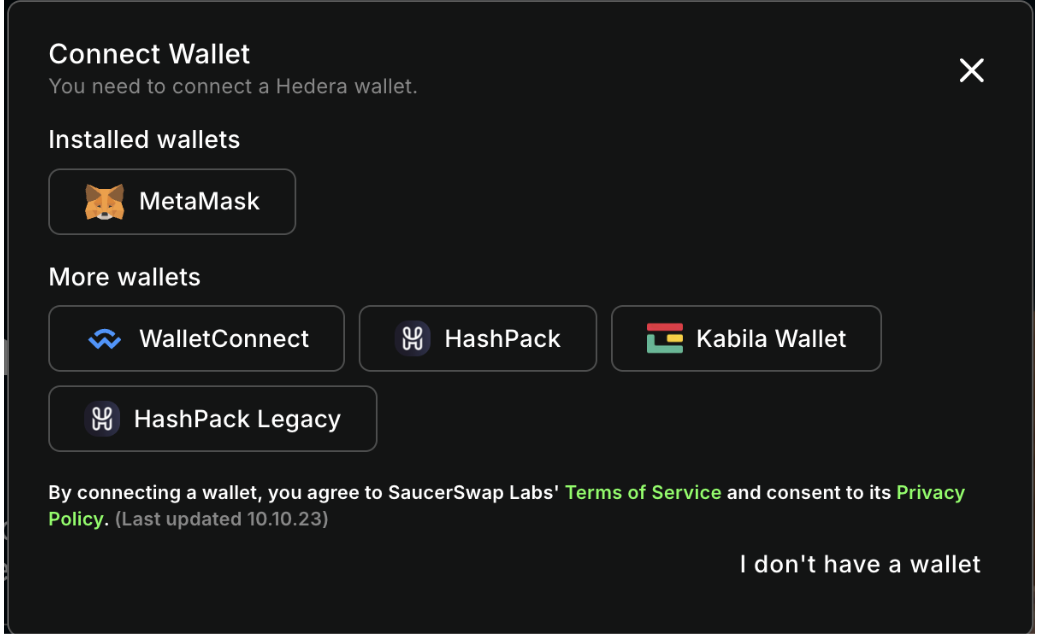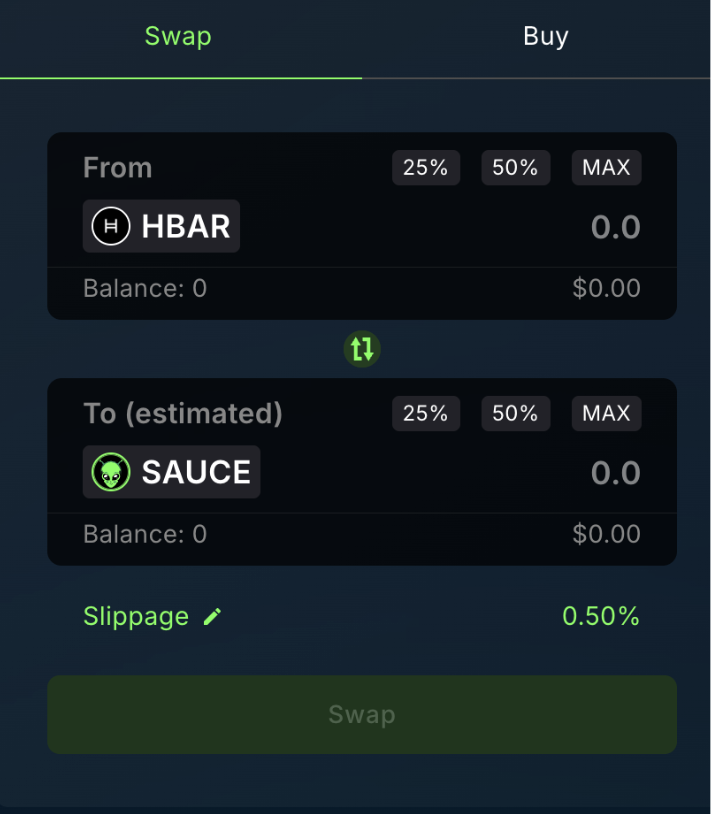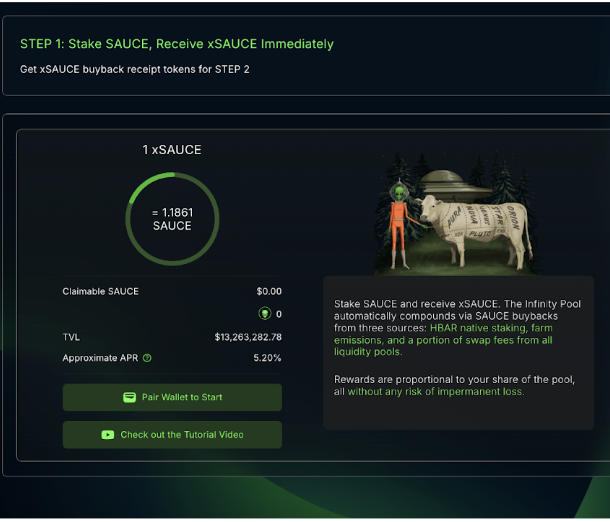Top 5 Use Cases for SaucerSwap in 2025
While most platforms are still chasing faster, cheaper crypto trading, SaucerSwap’s already delivering. As Hedera’s main DEX, it’s gaining real traction—with over $130 million in total value locked as of early 2025. But it’s not just about token swaps anymore. Traders are using it for staking, governance, liquidity rewards—practical features that are actually getting used.
If you’ve been wondering why SaucerSwap keeps popping up in DeFi circles, these five use cases make it clear: it’s not just hype.
1: Seamless token swaps
SaucerSwap does one thing really well: fast, reliable token swaps. It taps into the Hedera Token Service (HTS), which means trades settle in about 3 to 5 seconds—no waiting or surprise gas fees. SaucerSwap also prices transaction costs in USD, which keeps fees not low and predictable. That’s a big plus for high-volume traders and anyone fed up with Ethereum’s delays and costs.
Swapping HBAR for USDC or newer HTS tokens feels smooth, and with SaucerSwap V2’s concentrated liquidity, slippage stays low—even in smaller pools. The smoother experience is helping SaucerSwap pull users away from Uniswap and other Ethereum-based DEXs.
2: Liquidity provision and yield farming
The process to provide liquidity on SaucerSwap is simple: pick a token pair, deposit both tokens into a pool, and get LP tokens in return. In return, you earn 0.25% of every swap made in that pool. It’s passive, steady, and a big draw for yield-focused users.
In 2025, SaucerSwap raised the bar with the Liquidity-Aligned Reward Initiative, or LARI. It adds dual rewards—HBAR and SAUCE—to the mix. It also gives users more incentive to stick around. Once you possess LP tokens, you can stake them using the Masterchef contract. Your tokens stay in the pool, earning fees and rewards while you do nothing.
The desire for passive income has attracted long-term investors looking beyond quick gains. It has also added real depth and stability to SaucerSwap’s liquidity. The result is a trading platform where traders can park their assets and earn over time. Growing user commitment is turning it into a central hub for DeFi activity on Hedera.
3. Governance via SAUCE token
The SAUCE token does more than reward users—it opens the door to governance. As SaucerSwap’s decision-making tool, SAUCE gives holders the ability to vote on key protocol updates, including fee structures, liquidity incentives, and reward mechanisms. In 2025, the DAO continues to expand its role, with potential votes on cross-chain integrations like Axelar outlined in recent roadmaps.
Governance appeals to users who care about decentralization and want a say in how platforms evolve. As participation grows, SaucerSwap moves further from a top-down model. Community-driven decision-making makes everyday users active stakeholders, giving SaucerSwap an edge no centralized exchange can match—real ownership.
4: Cross-chain liquidity hub
SaucerSwap’s plans to integrate with bridge protocols like Axelar and LayerZero will enable seamless asset transfers across chains. In a multi-chain DeFi environment, this partnership helps Hedera connect with ecosystems like Ethereum, Solana, and Avalanche.
Imagine swapping wrapped BTC from Ethereum directly for HBAR via SaucerSwap at Hedera speeds. The move heralds a major step toward frictionless liquidity. As more users look for efficient, low-fee ways to move assets between chains, SaucerSwap’s cross-chain functionality could make it a go-to hub. It’s bound to lead to a broader user base, deeper liquidity pools, and a more competitive position in the DeFi space.
5: Community pool token launches
SaucerSwap’s community pools introduce a new way to launch tokens—placing distribution directly in user hands rather than under centralized control. Unlike a traditional launchpad, this model lets new projects build liquidity pools that directly reward early supporters.
Community pools continue to gain traction, with token launches tied to staking xSAUCE or holding ecosystem NFTs such as SAUCELINGs. For example, a new DeFi project might distribute tokens to xSAUCE stakers and offer bonus multipliers to SAUCELING holders. The system rewards participants without relying on gatekeepers.
Wrapping it up
SaucerSwap has come a long way. Token swaps are smooth. Yield farming feels accessible. Governance works. New projects are launching with real community support. Now, with cross-chain growth on the horizon, it’s starting to feel like more than a DEX. Hedera’s speed and low fees give it a competitive edge, but what really stands out is how involved users have become. If you're interested, try staking SAUCE or checking out a pool launch. Even a single vote in the DAO can show you what this kind of platform is building toward.




